Cast Iron Salmon
This post may contain affiliate links. See my disclosure policy.
My cast iron salmon recipe guarantees the perfect sear, with a caramelized crust and flaky, buttery salmon. It’s the perfect weeknight dinner that’s ready in under 10 minutes.
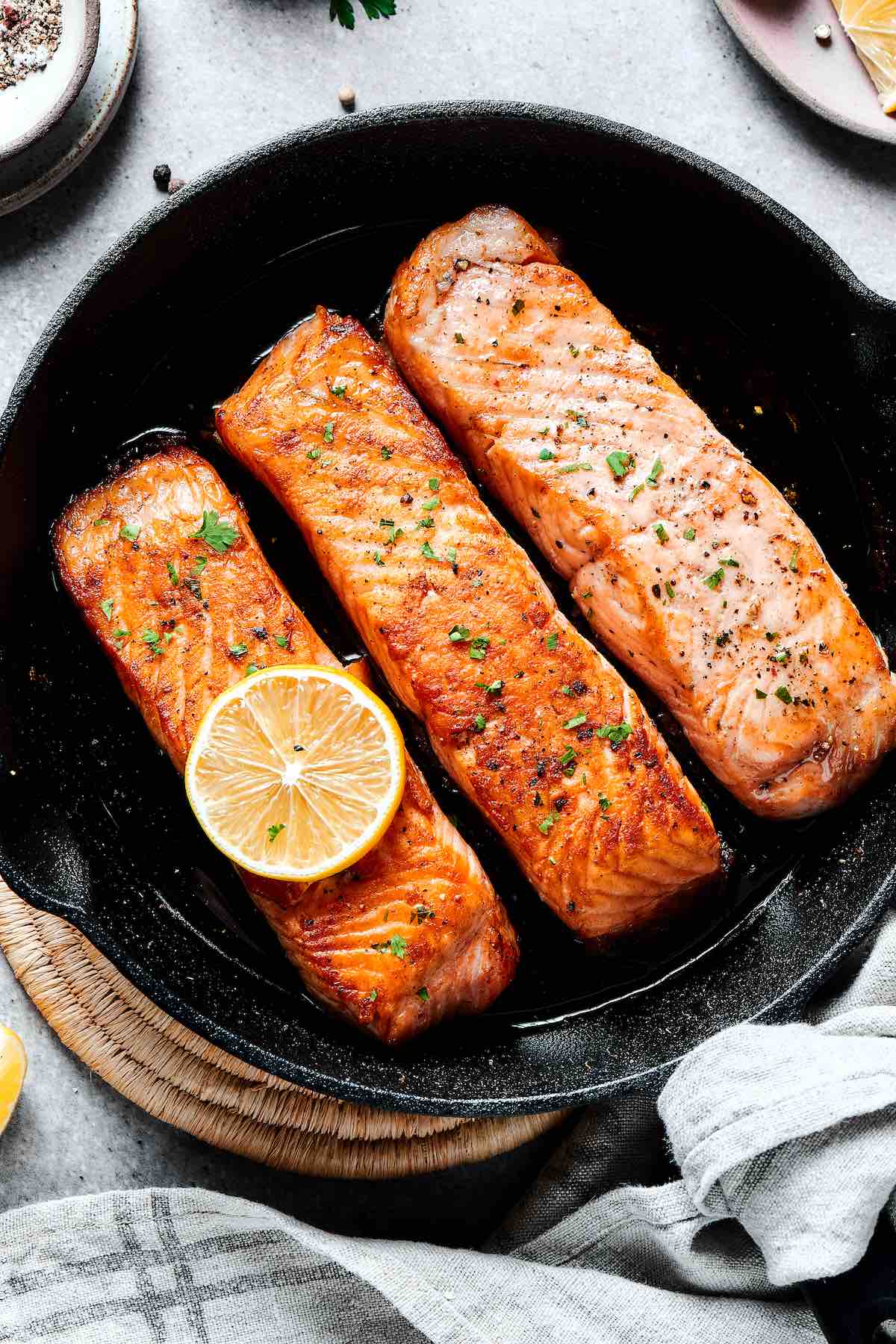
If you have a cast iron skillet, odds are you know how special it is. Our cast iron is well-seasoned and well-loved, and salmon is one of my favorite proteins to cook in it.
My salmon is simply seasoned and then pan-seared in the skillet, giving the exterior a firm crust while keeping the meat fork tender and flaky. Drizzled with pan juices and served with lemon slices, it’s one of my favorite foolproof dinners to feed my family…fast.
Table of Contents
Why I love this recipe
- The perfect cooking method. Cast iron skillets get VERY hot, which helps to avoid overcooking the fish. They’re also oven-safe, so you can continue cooking the salmon in the oven.
- It’s so darn fast. The trick is to let the pan preheat. Once it’s good and hot, that salmon will cook in minutes (6 to be exact!).
- Simple yet reliable. Like my pan-seared salmon, you never have to worry about how this recipe will turn out. It’s foolproof.
- A meal prep no-brainer. I always make a few extra fillets so I can have lunch planned for the rest of the week (it’s great in my salmon bowls!).
In need of more easy salmon recipes? Try my lemon pepper salmon, baked sockeye salmon, miso salmon, and firecracker salmon next.
★★★★★ REVIEW
“I followed this recipe and added paprika, fresh rosemary, and lemons as it cooked. The skin down + letting the skillet heat up made an excellent crust!” – Parker
Ingredients needed
- Salmon. I always prefer skin-on salmon filets as the skin gets extra crispy and keeps the meat moist. If possible, look for wild salmon, as it has a fresher flavor. If you use skinless fillets, be very careful when flipping to prevent any sticking.
- Olive oil. To drizzle over the fillets before searing them.
- Butter. To sear the salmon and add flavor.
- Lemon. To serve.
- Sea salt and black pepper. To taste.
Tips for buying salmon
Not all salmon is created equal, and some types are better for pan-searing than others.
Wild salmon will be leaner than farmed salmon, and it’ll also cook more quickly. If you’re new to cooking salmon, I’d suggest farmed king salmon since its high-fat content makes it harder to overcook.
Last but not least, make sure you’re getting skin-on fillets with the pin bones removed. Trust me, those things take forever to get out!
How to make cast iron salmon
I’ve included step-by-step photos below to make this recipe easy to follow at home. For the full printable recipe instructions and ingredient quantities, scroll to the recipe card at the bottom of this post.
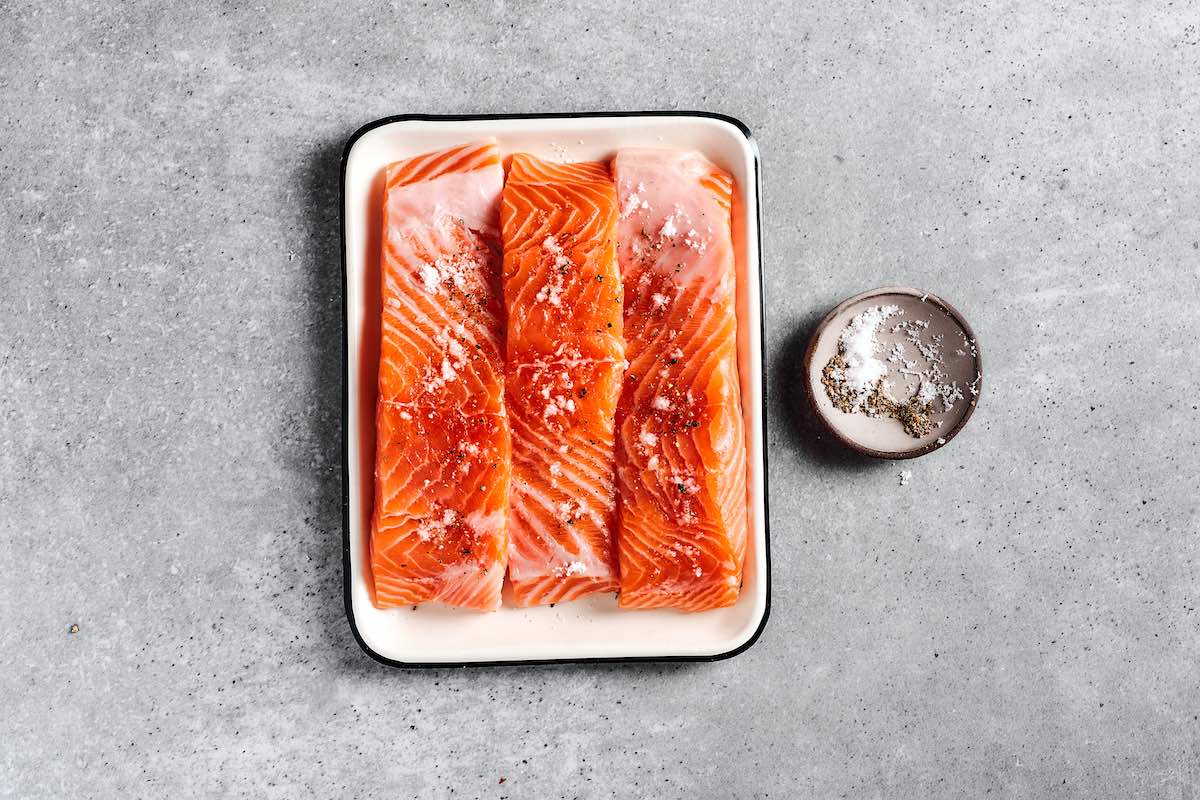
Step 1- Season the salmon. Drizzle olive oil over the salmon fillets and season skin side down with salt and pepper.
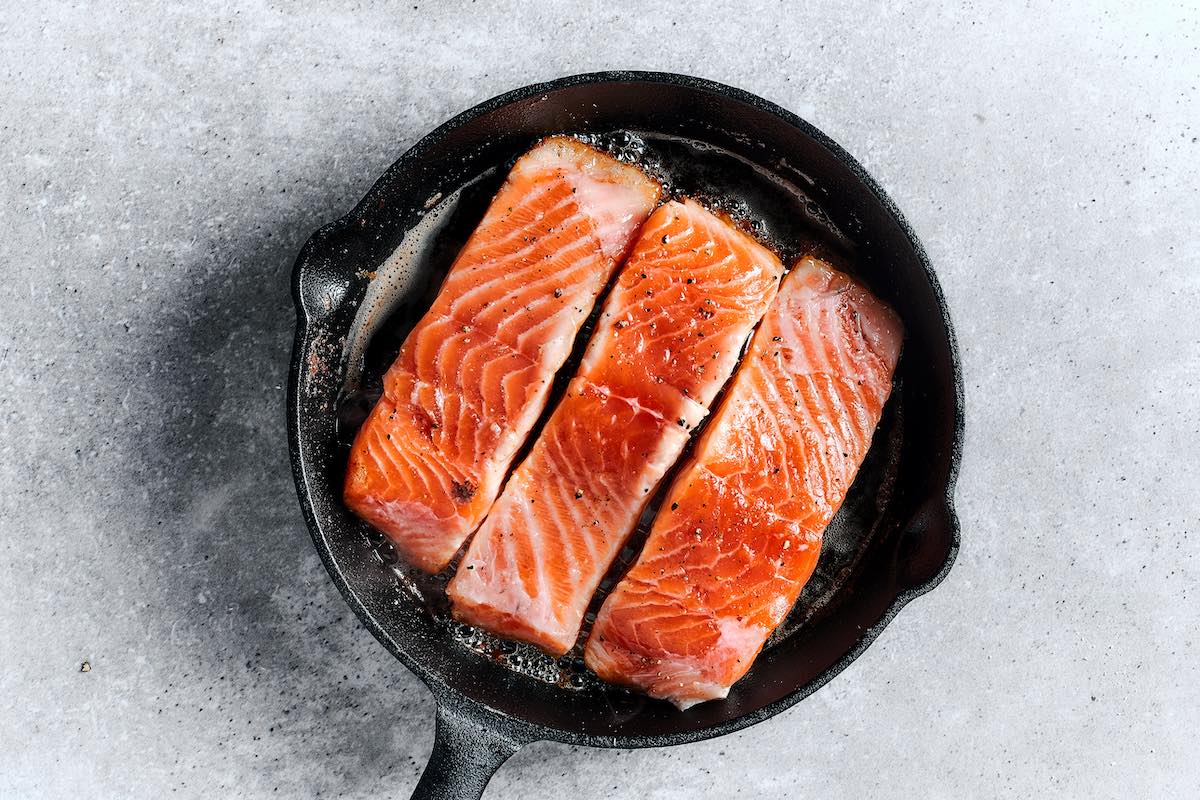
Step 2- Sear. Melt butter over high heat. Once hot, add the fillets, skin side down. Cook for 3 minutes, then reduce it to medium heat, flip the fillets, and cook for another 2 minutes.
Step 3- Serve. Transfer the salmon to a plate and top with the melted butter. Serve with lemon juice and lemon slices.
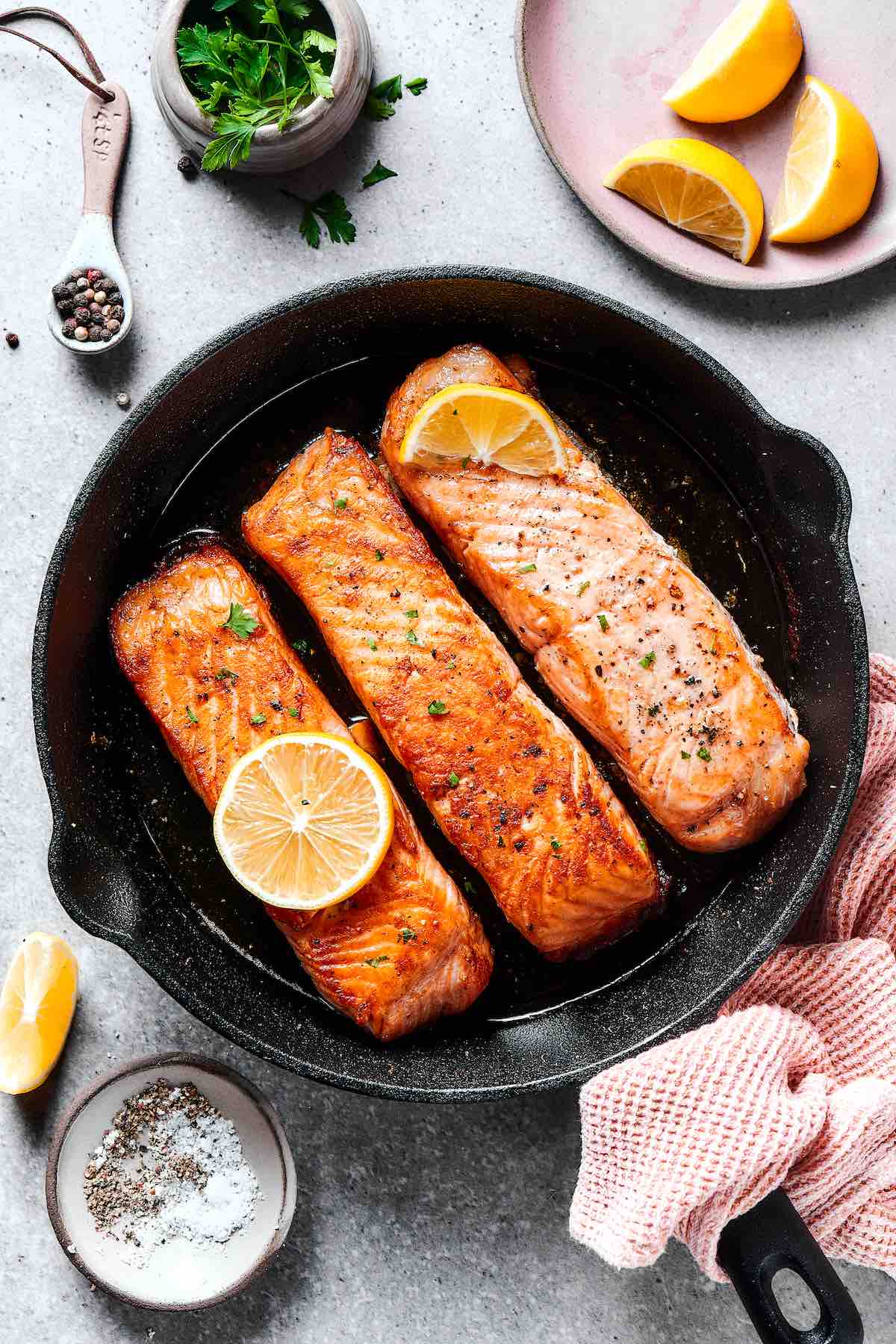
Arman’s recipe tips
- Start with a piping hot pan. This is my #1 tip for cooking with cast iron. If you add the fillets before the pan is hot, the fillet will get stuck to the pan and overcook before you can flip it.
- Use frozen salmon. I do it all the time! Just make sure it’s thawed overnight (or submerge it in cold water for 20 minutes), then pat it VERY dry with paper towels.
- You’ll know the salmon is fully cooked once it reaches an internal temperature of 125-130F. This guarantees the most flaky and moist salmon.
- Let the fish come to room temperature before cooking. So it cooks more evenly.
- Only flip the fish when it releases. The salmon will feel stuck in the pan for a few minutes, and that’s okay. Once it naturally releases, that’s when it’s time to flip.
Variations
- Add more spices. Try garlic powder, onion powder, paprika, or cayenne pepper for a touch of heat.
- Cook with garlic. Add minced garlic to the pan while searing the salmon, and baste the fillets with the garlic butter.
- Serve fresh herbs. Thyme, rosemary, parsley, and tarragon are all great pairings with salmon. Add them to the butter and cook for 1-2 minutes after you’ve removed the fillets.
Storage instructions
To store: Leftovers should be stored in an airtight container in the refrigerator for 2-3 days.
To freeze: Store the cooled salmon in a freezer-safe container and freeze for up to three months.
To reheat: Reheat the salmon in a covered pan over medium high heat or preheated oven (200C/400F) until warm.
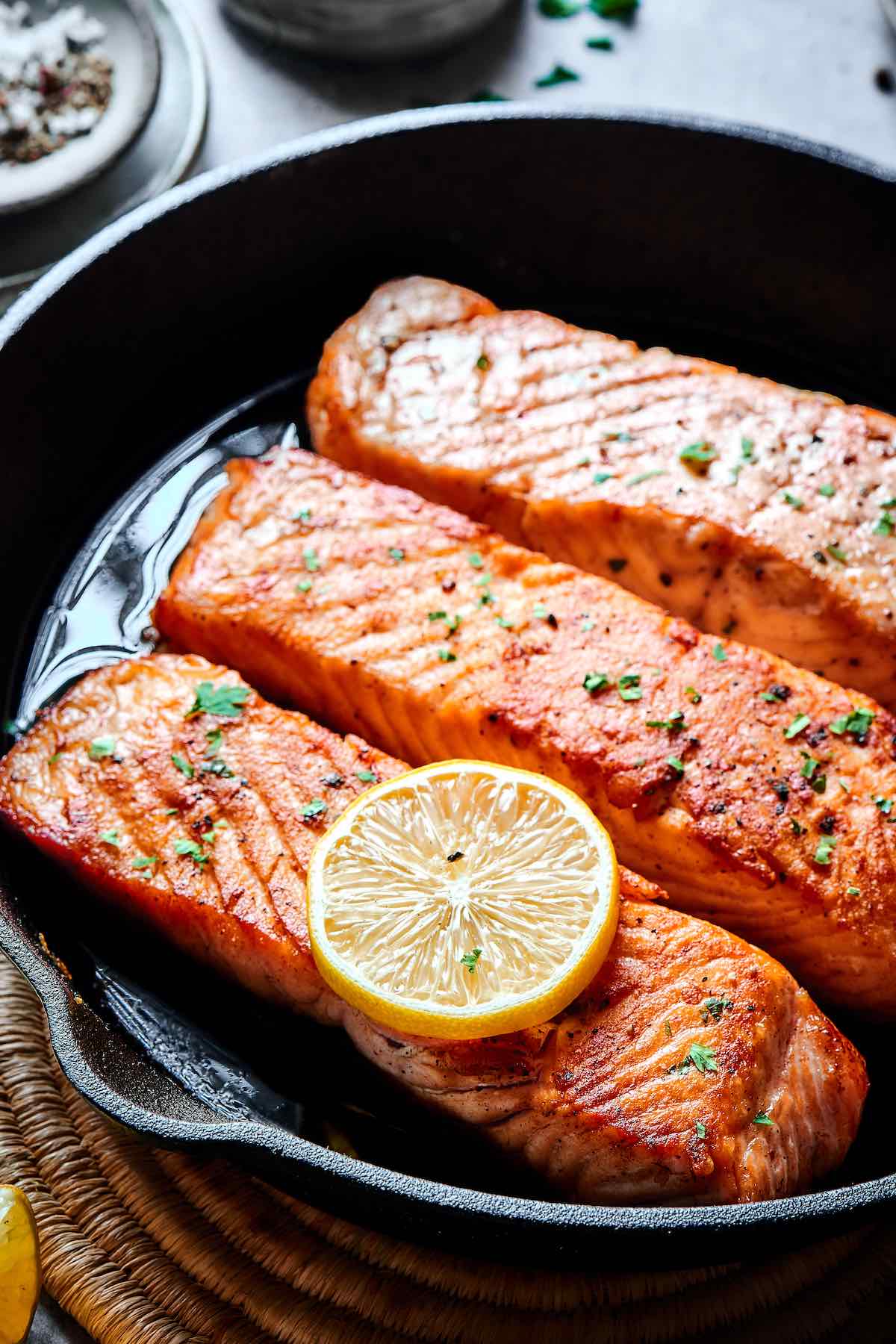
Frequently asked questions
Yes, flipping is necessary so both sides cook evenly. It also gives them that gorgeous sear.
I found the best way to avoid dry salmon is to seek skin-on, fresh salmon. Farmed salmon tends to be higher fat, which is better for staying moist. When in doubt, use a meat thermometer and look for an internal temperature of 125-130F.
More ways to cook in the cast iron
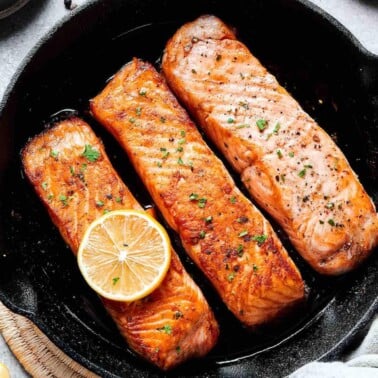
Cast Iron Salmon
Video
Ingredients
- 4 salmon fillets 4-6 ounces each
- 1 tablespoon olive oil
- 1/2 teaspoon salt
- 1/2 teaspoon pepper
- 2 tablespoons butter
- 1/2 small lemon sliced
Instructions
- Drizzle the olive oil over the salmon fillets and season the top side up with salt and pepper.

- Add butter to a non-stick iron skillet. Place the cast iron skillet over high heat and, once hot, add the salmon fillets into it, skin side down.

- Cook the salmon for three minutes, before reducing the heat to medium and flipping the fish. Cook for a further two minutes.
- Transfer the salmon to a plate and drizzle with the buttery pan juices. Serve with sliced lemons.
Notes
Nutrition
Originally published January 2023, updated and republished September 2024
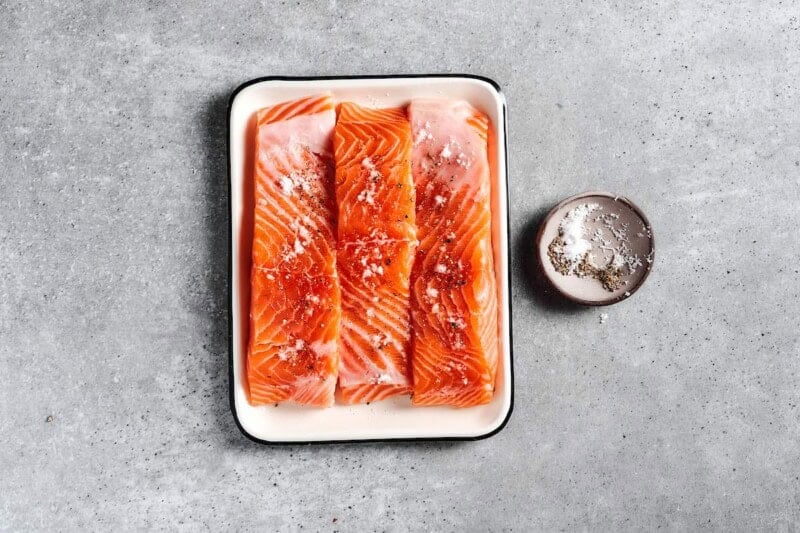
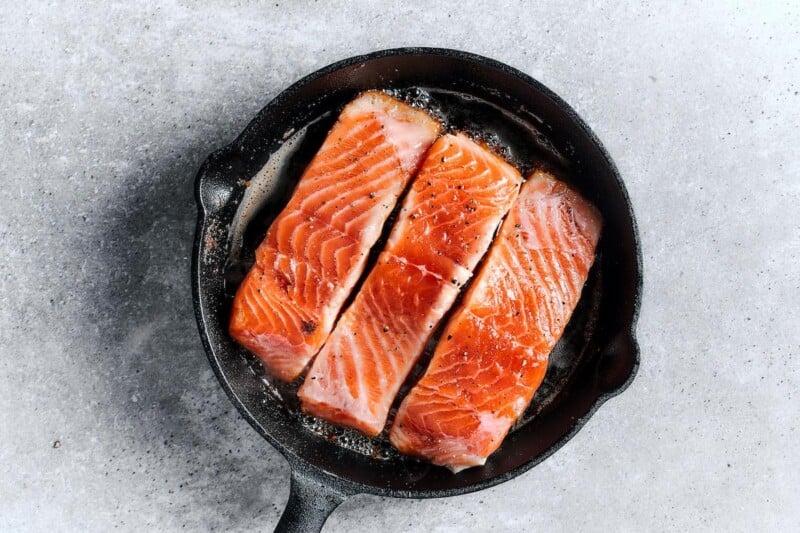














One of the best salmon recipes I’ve ever tried! How simplistic it is, with amazing results!
Thanks, Janet!
This may be my favorite salmon recipe.
Thanks, Linda!
It was perfect. Followed the directions exactly and they came out melt-in-your mouth delicious. Thank you.
Awesome.
I followed this recipe and added paprika and fresh rosemary and lemons as it cooked. The skin down + letting the skillet heat up made an excellent crust!
Can’t wait to try this out
The cast iron option is so much healthier than toxic tin foil…